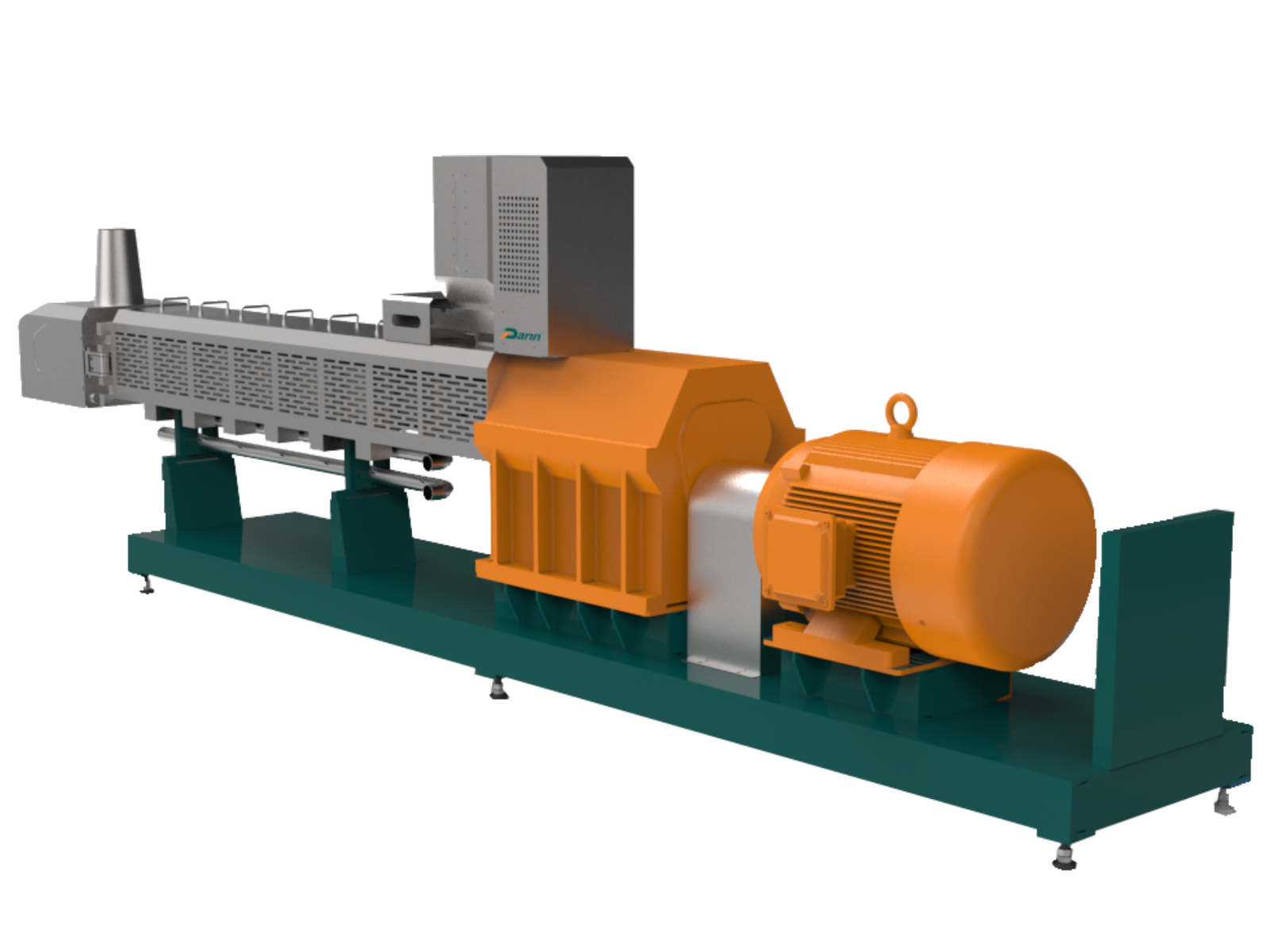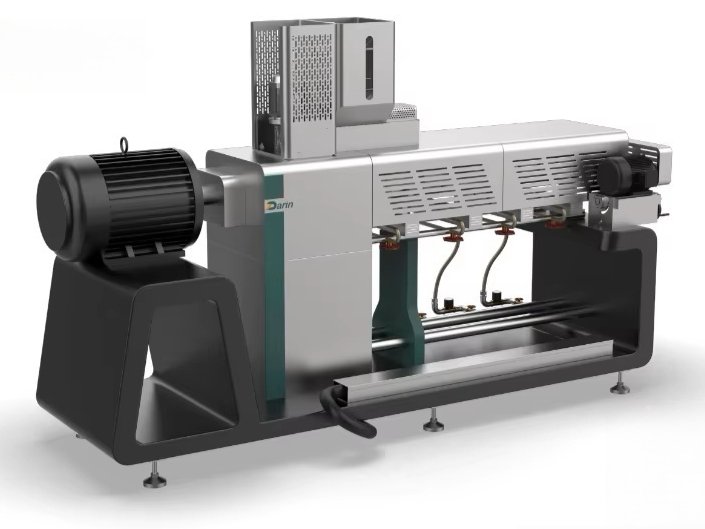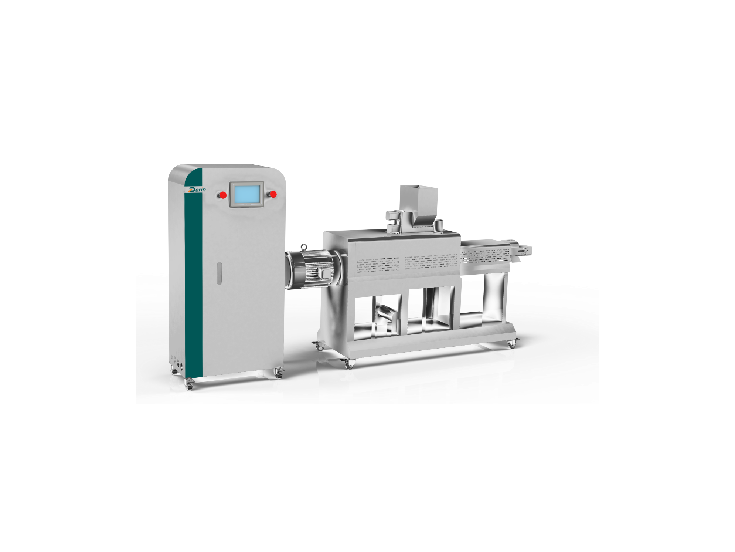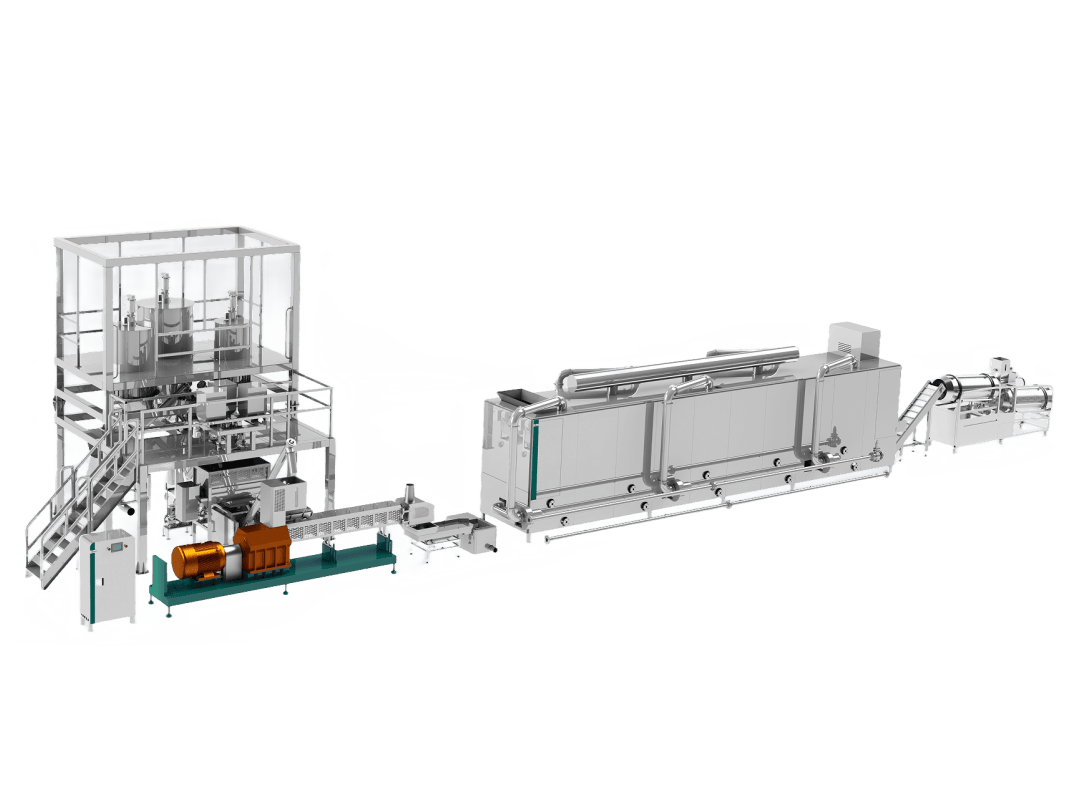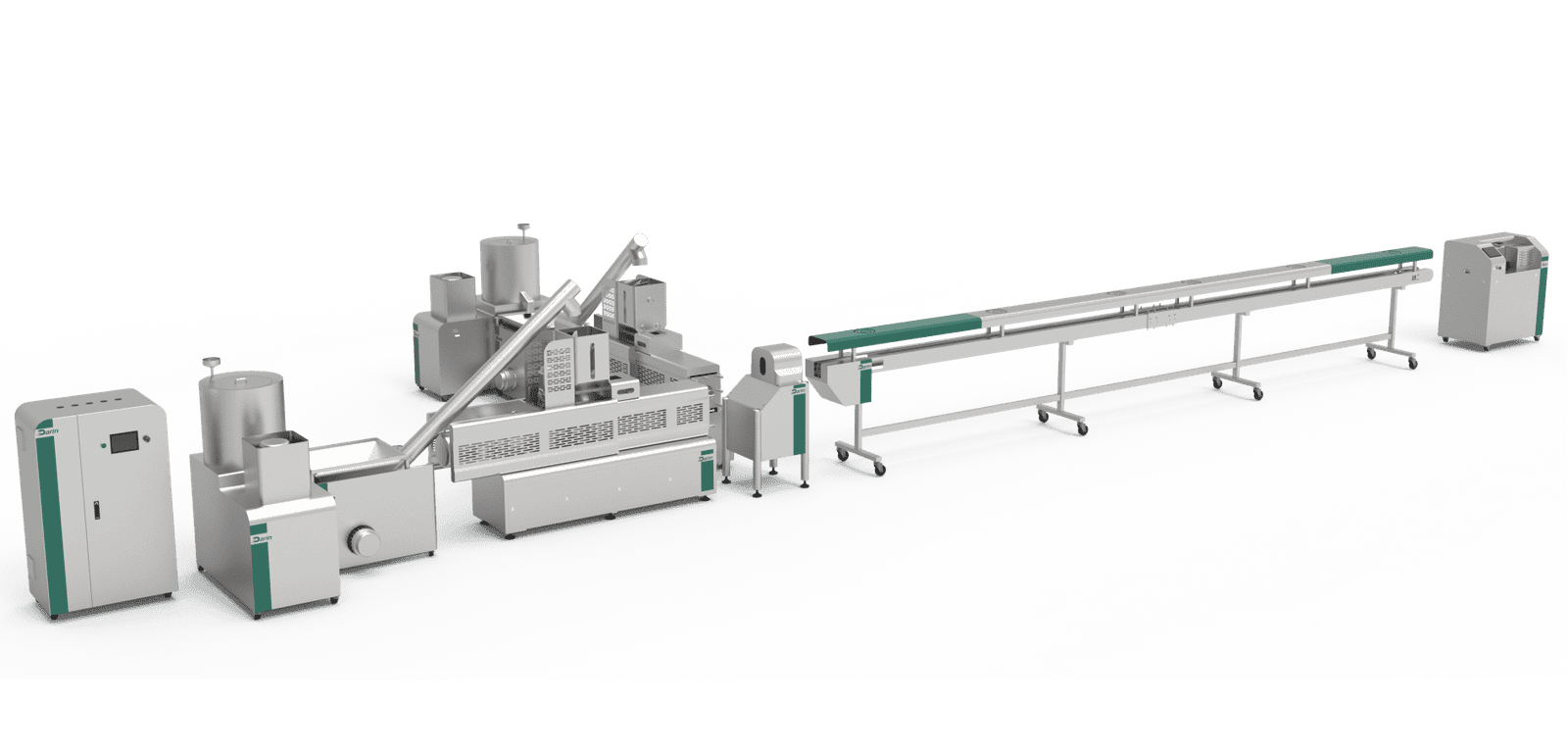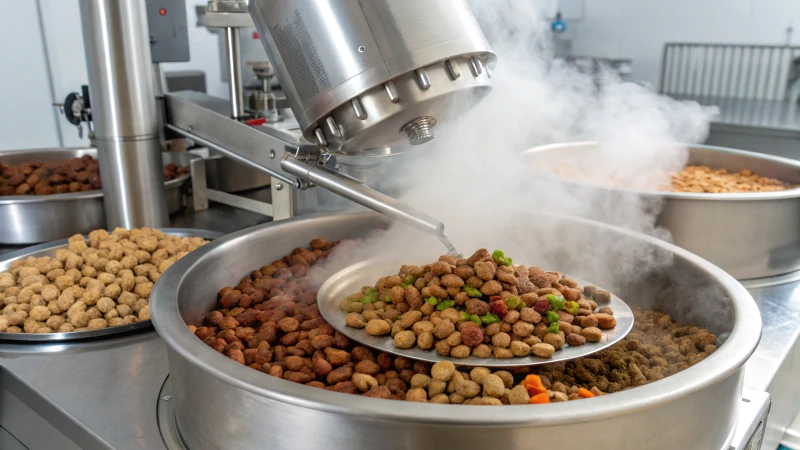
Ever stood in the pet food aisle, wondering how those colorful kibble pieces come to be?
Extruded pet food is produced through a manufacturing process where ingredients are cooked under high heat and pressure, then forced through a die to create specific shapes. This method enhances the digestibility and shelf life of the food, making it a popular choice among pet owners.
When I first learned about extruded pet food, it was like discovering a secret ingredient to my dog's health and happiness. Imagine taking a bunch of raw ingredients, cooking them up under intense pressure and heat, and then shaping them into those crunchy bits our pets adore. Not only does this process make the food easier for pets to digest, but it also significantly extends its shelf life. For me, this meant fewer trips to the store and more time to focus on what really matters—playtime with my furry friend! As I dug deeper into the world of pet nutrition, I realized how vital it was to understand not just what goes into my pet’s bowl, but how it got there.
Extruded pet food is cooked under low heat.False
Extruded pet food is cooked under high heat and pressure, not low heat.
Extruded pet food has an enhanced shelf life.True
The extrusion process increases the shelf life of the pet food.
How is Extruded Pet Food Made?
Ever wondered how that crunchy kibble makes it from raw ingredients to your pet’s bowl?
Extruded pet food is made by mixing raw ingredients, heating them to high temperatures, and forcing them through a die. This process enhances digestibility and ensures the final product's shape, texture, and nutritional value.

Understanding the Extrusion Process
Let me take you behind the scenes of how extruded pet food is crafted—a process that’s as intricate as it is fascinating. It all begins with selecting the right mix of ingredients. Picture this: A blend of meats, grains, vitamins, and minerals, each chosen with utmost care to ensure they meet the nutritional needs of our beloved pets.
Once these ingredients are gathered, they’re mixed together and then fed into a machine known as a preconditioner. This is where the magic begins—steam and water are added to start the cooking process. I remember watching this for the first time and being amazed at how it transformed the mix into something more pliable, ready for the next step.
Inside the extruder, the mixture faces intense pressure and heat. Imagine a giant oven that not only cooks but also purifies the mix, making it safe for consumption by eliminating any harmful bacteria. The role of temperature1 is crucial here; it's all about ensuring safety and enhancing digestibility.
Next comes shaping. The hot, cooked mixture is pushed through a die, which determines its final form. This might sound like a minor detail, but trust me, it’s an art form. Whether it’s little circles or bone shapes, this step caters to different pet preferences and nutritional needs.
Post-Extrusion Steps
Once shaped, the kibble goes through a drying process to remove excess moisture—critical for longevity and preventing spoilage. I often think of this as giving the kibble its armor against time.
Finally, fats and oils are sprayed onto the surface to boost flavor. This coating step isn’t just about taste; it’s about making sure our furry friends find their meals irresistible.
Benefits of Extrusion in Pet Food Manufacturing
| Aspect | Benefit |
|---|---|
| Nutritional Value | Preserves essential nutrients effectively |
| Safety | High temperatures kill harmful bacteria |
| Digestibility | Improves digestibility through pre-cooking |
| Customization | Allows for diverse shapes and textures |
This process isn't just about making food; it's about crafting meals that cater to specific needs like weight management or allergies. Thanks to continuous technological advancements, extruded pet food is evolving, ensuring our pets enjoy well-balanced diets tailored just for them.
Understanding this journey from raw ingredients to final kibble not only helps us appreciate what goes into our pets' meals but also empowers us to make informed choices about their nutrition.
Extrusion sterilizes pet food by killing pathogens.True
High temperatures during extrusion eliminate harmful bacteria, ensuring safety.
Extruded pet food cannot be customized for dietary needs.False
The process allows for diverse shapes and formulations, including special diets.
What Are the Nutritional Benefits of Extruded Pet Food?
Ever wondered why so many pet owners swear by extruded pet food? It’s not just the convenience—it’s packed with nutritional goodness!
Extruded pet food offers numerous nutritional benefits, including improved digestibility and enhanced nutrient availability. The extrusion process breaks down complex carbohydrates and proteins, making them more accessible for pets to absorb, promoting better health and well-being.

Understanding the Extrusion Process
I remember the first time I visited a pet food plant; the sight of massive machinery and the complexity of the extrusion process was awe-inspiring. Extrusion involves cooking raw ingredients under high pressure and temperature, breaking down complex molecules into simpler ones. This not only optimizes the digestibility2 of carbohydrates and proteins but also ensures nutrients are more bioavailable.
Improved Digestibility and Nutrient Absorption
The science behind it is fascinating—the breakdown of starches during extrusion significantly enhances their digestibility3. Picture this: your pet's food goes from being just a meal to a powerhouse of nutrition, enabling them to extract maximum energy and nutrients, fostering their health.
| Nutrient | Benefits |
|---|---|
| Proteins | Muscle growth and repair |
| Carbohydrates | Energy supply |
| Fats | Healthy coat and skin |
| Vitamins & Min. | Immune system support |
Enhanced Palatability
Beyond nutrition, there’s something almost magical about how the extrusion process elevates palatability4. I’ve seen pets transform into eager eaters, drawn by the appealing textures and flavors created through this method, making feeding time a joy rather than a chore.
Safety and Shelf-Life Benefits
Extrusion also ramps up safety by cooking at high temperatures to effectively eliminate pathogens. I often marvel at how this process extends the shelf-life5 of pet food, giving peace of mind with convenient storage and reduced spoilage risk.
Customization Opportunities
One of my favorite aspects of extrusion is its versatility. It opens up endless possibilities for manufacturers to tailor nutrient profiles to meet specific dietary needs. Whether you're looking for grain-free options or protein-rich diets, extruded foods can be customized for various health requirements.
Explore more on how extrusion technology advances pet nutrition6 with new innovations7.
Extrusion improves pet food digestibility.True
The extrusion process breaks down complex molecules, enhancing nutrient absorption.
Extruded pet food has a shorter shelf-life.False
Extrusion extends shelf-life by eliminating pathogens and preserving the food.
How Does Extruded Pet Food Compare to Baked Dog Food?
Hey there, ever wondered what makes your pup's kibble crunchy or their baked food smell so irresistible?
Extruded dog food is made by forcing ingredients through a machine at high temperatures, resulting in kibble, while baked dog food is cooked at lower temperatures, preserving nutrients and flavor.

The Process: Extruded vs. Baked
When I first embarked on the journey to find the best dog food for my furry friend, I was overwhelmed by the choices—extruded and baked being at the top of the list. Extrusion is akin to a pressure cooker scenario. Ingredients get mixed together and then pushed through an extruder machine8 at really high temperatures, creating that familiar kibble. While this process is super efficient for mass production, I did worry about how the heat might zap some of those precious nutrients.
On the flip side, baked dog food is like baking your favorite loaf of bread. It’s all about low temperatures and patience, which helps in locking in more nutrients and bringing out natural flavors. When I switched to baked food, I noticed my dog seemed to relish the meals more, possibly due to the retained taste and aroma.
| Aspect | Extruded Food | Baked Food |
|---|---|---|
| Temperature | High | Low |
| Nutrient Retention | Often reduced | Generally higher |
| Texture | Hard, crunchy | Firm yet softer |
Nutritional Impacts
After reading up on it, I found that high temperatures used in extrusion can indeed lead to a loss of essential nutrients like vitamins. This was a concern for me because I want my dog to get all the good stuff they need. However, extrusion does make some proteins and carbohydrates9 easier to digest, which is a plus if your pet has a sensitive tummy.
In contrast, baking maintains nutrient integrity better. It felt reassuring to know that I was feeding my dog something potentially more nutritious. The texture of baked food is denser, which took some getting used to for my dog, but he adjusted after a while.
Palatability and Taste
Taste and smell are big deal-breakers for my picky eater. I noticed that baked dog foods tend to have a more aromatic and natural taste thanks to those lower cooking temperatures. This was a win for us because it was much easier to entice my pet to eat. Meanwhile, extruded foods often need extra flavor enhancers, which made me think twice since I prefer keeping things natural for my pet.
In the end, both types of dog food have their own perks. It’s about weighing what matters most for your pet’s dietary needs and preferences. For me, understanding these differences was key to making a decision that kept my dog happy and healthy.
Extruded dog food retains more nutrients than baked.False
Baked dog food retains more nutrients due to lower cooking temperatures.
Baked dog food typically has a softer texture than extruded.True
Baked dog food is firm yet softer compared to the hard, crunchy extruded food.
Is Extruded Pet Food Safe for My Pet?
When I first stumbled upon extruded pet food, I was intrigued and cautious at the same time. I needed to know: Is this safe for my beloved pet?
Extruded pet food is generally considered safe and offers balanced nutrition, as the extrusion process kills harmful bacteria and increases digestibility. However, it's essential to choose high-quality brands to ensure optimal safety and nutrition.
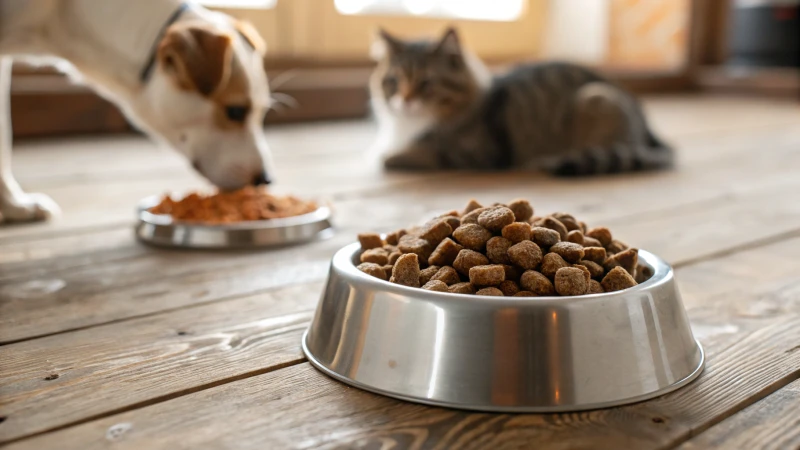
What is Extruded Pet Food?
Imagine a kitchen where ingredients are tossed together, cooked, and shaped into tiny nuggets of goodness. That's what happens in extrusion! Ingredients are mixed, cooked, and pressed through a die to form kibble. This process not only creates those crunchy bites my pets adore but also helps eliminate harmful bacteria, enhancing digestibility and extending the shelf life of pet food10.
Benefits of Extruded Pet Food
As a pet parent, convenience and nutrition are top priorities for me, and extruded pet food checks both boxes. Here’s why:
- Nutrient Preservation: Just like how I try to keep the nutrients intact when I cook dinner at home, the extrusion process preserves essential nutrients while making the kibble tasty and easy to store.
- Bacterial Safety: The high temperatures during extrusion make it a safer option by killing off any pesky pathogens like Salmonella.
- Convenience: Let’s be honest—having a complete diet ready in one package makes feeding time a breeze.
| Benefit | Description |
|---|---|
| Nutrient Preservation | Ensures essential nutrients remain intact |
| Bacterial Safety | Kills pathogens through high temperatures |
| Convenience | Offers a complete and easy-to-feed diet |
Potential Concerns
While extruded pet food sounds fantastic, there are some concerns I keep in mind:
- Quality of Ingredients: The safety of extruded pet food hinges on the raw ingredients' quality, so I always opt for reputable brands.
- Nutrient Loss: Like cooking veggies too long, some nutrients may degrade at high temperatures, but thankfully, formulations usually include added supplements.
- Additives and Preservatives: Some extruded foods might contain artificial additives or preservatives—something I’m cautious about for my sensitive pets.
How to Choose Safe Extruded Pet Food
Choosing the right extruded food can feel like navigating a maze, but I follow these steps to ensure my pets get the best:
- Check Labels for Quality Certifications: I always look for certifications like AAFCO or FEDIAF standards to ensure nutritional adequacy.
- Research Brands: Trustworthy brands with a commitment to quality and transparency are my go-tos.
- Consult Your Vet: Discussing my pet's specific dietary needs with a vet helps me determine if an extruded diet is the right choice.
| Step | Action |
|---|---|
| Check Labels | Look for certifications ensuring nutritional adequacy |
| Research Brands | Choose reputable brands committed to quality |
| Consult Your Vet | Ensure diet suitability through professional guidance |
Exploring Alternatives
While I find extruded pet food convenient, I also explore alternatives like raw diets11, freeze-dried options, or home-cooked meals depending on my pet's needs and our lifestyle.
Understanding these facets helps me make informed decisions about my furry friend's diet, weighing both benefits and potential drawbacks. Prioritizing quality and consulting professionals ensures my pet's health and wellbeing remain optimal. Navigating pet nutrition12 might seem complex, but with proper research, I can confidently take charge of my pet’s dietary choices.
Extruded pet food eliminates all harmful bacteria.False
High temperatures kill most, but not all, pathogens.
Quality certifications ensure extruded food's nutritional adequacy.True
Certifications like AAFCO confirm balanced nutrition.
What Should I Look for When Choosing Extruded Pet Food?
Ever stared down the pet food aisle, feeling overwhelmed by choices? You're not alone. Picking the perfect extruded pet food can make a world of difference for your furry friend's health.
When selecting extruded pet food, prioritize ingredients that offer high nutritional value, ensure the product meets safety standards, and consider your pet's specific dietary needs. Quality sourcing and transparent labeling are also essential.
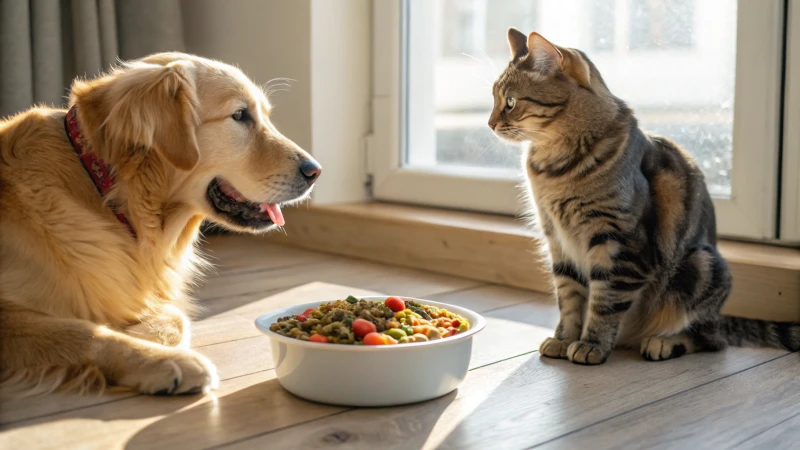
Nutritional Value and Ingredients
I remember standing in the pet food aisle, holding a bag of kibble and wondering if it really was the best choice for my pet. When it comes to extruded pet food, the nutritional value13 is the foundation of a healthy diet. I've learned to always check that real meat is the first ingredient because it's a great source of protein to support muscle growth. Avoid fillers like corn or soy, which might not provide the essential nutrients your pet needs.
| Ingredient | Benefit |
|---|---|
| Real Meat | High in protein, supports muscle growth |
| Vegetables | Rich in vitamins and fiber |
| Omega-3 Fatty Acids | Promotes a healthy coat and skin |
Safety Standards and Certifications
I once discovered that not all pet foods are created equal. Ensuring the food meets recognized safety standards14, like AAFCO compliance, gives me peace of mind. These certifications reassure me that I'm meeting my pet's basic nutritional needs.
Understanding Your Pet's Dietary Needs
Every pet is unique. I remember when my dog, Max, turned seven; I switched his diet to something that catered to joint health. Age, breed, and any health conditions play a big role in choosing the right food.
Quality Sourcing and Label Transparency
It's like trusting a chef who proudly shares where their ingredients come from—brands with transparent labeling15 make me feel confident about what I'm feeding my pet. Quality sourcing ensures top-notch ingredients in every bite.
Analyzing Manufacturing Processes
Extruded pet foods undergo high pressure and temperature cooking. I found this fascinating because while it enhances digestibility, it can also lower some nutrient levels. Understanding this helps me gauge the overall quality of the food by evaluating the manufacturing process16.
Comparing Brands and Prices
Price is often a tricky factor. I learned the hard way that cutting costs sometimes means compromising on quality. Premium brands often justify their higher price with better ingredients and rigorous testing, which is worth considering.
By focusing on these factors, I've become more confident in choosing the right extruded pet food that keeps my pet happy and healthy. Exploring pet nutrition resources17 can provide additional insights and help in making well-informed decisions.
Extruded pet food should list real meat as the first ingredient.True
Real meat provides high protein, essential for muscle growth.
All extruded pet foods must comply with AAFCO standards.False
AAFCO compliance is recommended but not mandatory for all brands.
Can Extruded Pet Food Improve My Pet's Health?
Ever wondered if the type of food you're feeding your pet could be the key to their vibrant health?
Yes, extruded pet food can improve your pet's health by enhancing nutrient digestibility and ensuring a balanced diet. The extrusion process involves cooking the food at high temperatures, which makes nutrients more accessible and kills harmful bacteria, potentially improving your pet's overall nutrition and safety.

What is Extruded Pet Food?
When I first heard about extruded pet food, I was curious and a bit skeptical. Could this high-temperature cooking process really make a difference in my pet's diet? The idea of ingredients being mixed, cooked, and shaped through a die sounded a bit like a science experiment. But I learned that this method not only boosts nutrient digestibility18 but also ensures that the food is free from harmful bacteria—quite the relief for a cautious pet parent like myself.
Nutritional Benefits
I've often found myself standing in the pet food aisle, overwhelmed by choices. But knowing what each nutrient does can make all the difference:
| Nutrients | Benefits |
|---|---|
| Protein | Muscle development |
| Fiber | Digestive health |
| Vitamins | Immune system boost |
Seeing how the extrusion process19 helps preserve these essential vitamins and minerals gave me peace of mind that my furry friend was getting a well-rounded diet.
Safety and Hygiene
One thing that often keeps me up at night is worrying about food safety for my pet. But learning that extrusion involves high temperatures that eliminate pathogens like Salmonella and E.coli was comforting. It’s reassuring to know that by choosing extruded pet food, I’m making a safer choice for their health.
Comparing with Other Processing Methods
Trying to decide between different types of pet food can be like navigating a maze. Here's what I discovered:
| Method | Temperature | Nutrient Retention |
|---|---|---|
| Extrusion | High | Moderate |
| Baking | Moderate | High |
| Cold-Press | Low | Very High |
While baking and cold-pressing might retain more nutrients, extrusion strikes a unique balance by ensuring safety without severely compromising nutritional content.
How to Choose the Right Extruded Food?
Choosing the right extruded food feels like picking out the perfect gift for a loved one—it needs to fit their needs perfectly. Factors like age, breed, and specific health conditions play a role. I always look for brands that are transparent about their ingredient sourcing20 and nutritional content to ensure I'm giving my pet the best.
Ultimately, it’s all about aligning their diet with their health goals. Consulting with a vet has always been a smart step before making significant dietary changes, ensuring my decisions support their well-being in every way possible.
Extruded pet food improves nutrient digestibility.True
The high-temperature cooking process enhances the digestibility of nutrients.
Cold-pressing retains fewer nutrients than extrusion.False
Cold-pressing retains more nutrients compared to the extrusion process.
Conclusion
Extruded pet food is made by cooking ingredients under high heat and pressure, enhancing digestibility, safety, and shelf life while allowing for diverse shapes and nutritional profiles.
Learn how temperature controls ensure safety by killing bacteria during extrusion. ↩
Understand how the extrusion process works to improve digestibility in pet food. ↩
Learn about the science behind improved digestibility in extruded pet foods. ↩
Discover why enhancing palatability is crucial for pets' feeding habits. ↩
Find out how extrusion contributes to longer shelf-life in pet foods. ↩
Explore recent technological advancements improving extruded pet nutrition. ↩
See how new technology is shaping the future of extruded pet foods. ↩
Learn about the machinery behind the extrusion process to understand how it affects dog food quality. ↩
Explore how extrusion impacts protein structure and digestibility in pet food. ↩
Learn about the extrusion process that ensures safety and enhances nutritional value in pet food. ↩
Explore raw diets as an alternative to understand different nutritional benefits and risks. ↩
Discover the significance of balanced nutrition for maintaining your pet's health. ↩
Understand how nutritional value affects your pet’s health, ensuring a balanced diet. ↩
Learn about certifications that ensure pet food safety and nutritional adequacy. ↩
Discover the benefits of transparency in labeling for assessing pet food quality. ↩
Explore how extrusion impacts nutrient retention and digestibility in pet foods. ↩
Find resources that provide deeper insights into maintaining a healthy diet for pets. ↩
Learn how extrusion technology enhances nutrient accessibility, crucial for your pet's digestion and health. ↩
Understand the extrusion process's role in nutrient retention and safety in pet food production. ↩
Discover how to assess ingredient quality and sourcing for ensuring the best nutrition for your pet. ↩


